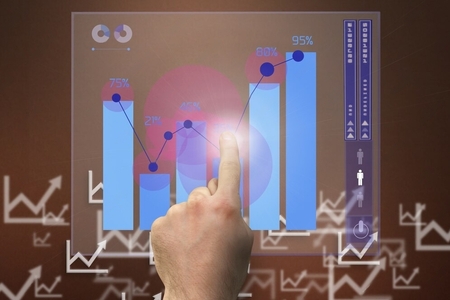Explained: Why We Need to Rethink Incentive-Based Safety Strategies in Modern Workplaces

See It In Action

Safety AI Software in Action
See how Visionify's Safety AI Software monitors workplace safety in real-time
Example Videos
Safety AI Software in Action
See how Visionify's Safety AI Software monitors workplace safety in real-time
Hard Hat Compliance in Construction
See how Vision AI detects hard hat violations in real-time
Hard Hat Compliance in Manufacturing
Vision AI PPE Compliance for Manufacturing
Key Takeaways
- Outdated Approach: Traditional safety incentive programs can create complacency and data distortion
- Technological Revolution: Vision AI and IoT sensors offer proactive alternatives to reactive incentive models
- Misaligned Focus: Reward-based systems often prioritize metrics over actual safety improvements
- Balanced Solution: Combining thoughtfully designed incentives with modern technology creates truly safer workplaces
- Cultural Shift: Moving from reward-dependent safety to technology-enhanced safety culture
The Limitations of Traditional Safety Incentives
In today's rapidly evolving industrial landscape, many organizations continue to rely on decades-old safety incentive programs. These programs typically reward employees for achieving periods without recordable incidents or maintaining safety compliance. While well-intentioned, this approach has significant flaws that can actually undermine workplace safety.
Traditional safety incentive programs often create a dangerous paradox: they can reduce reported incidents while failing to reduce actual incidents. When rewards are tied to maintaining "perfect" safety records, employees become reluctant to report minor incidents or near-misses, fearing they'll jeopardize team bonuses or recognition.
 Traditional safety incentive programs often focus on lagging indicators rather than proactive safety measures
Traditional safety incentive programs often focus on lagging indicators rather than proactive safety measures
The Technological Revolution in Workplace Safety
The fifth industrial revolution has brought transformative technologies that fundamentally change how safety can be managed:
- Vision AI systems that continuously monitor workspaces to detect hazards, PPE non-compliance, and unsafe behaviors in real-time
- IoT sensors that track environmental conditions and equipment status to prevent failures before they occur
- Wearable devices that monitor worker positioning, fatigue levels, and exposure to hazards
- Predictive analytics that identify patterns and forecast potential safety issues before they manifest
These technologies offer a proactive approach to safety that incentive programs simply cannot match. Rather than rewarding the absence of reported incidents, they actively prevent incidents from occurring in the first place.
Three Critical Flaws in Incentive-Based Safety
1. Complacency in a Technological Age
When organizations emphasize incentives over technological advancement, they risk creating a workforce satisfied with meeting minimum requirements rather than embracing innovations that could dramatically improve safety. Employees focused on achieving incentive targets may resist new technologies that might initially reveal more safety issues, even if those technologies would ultimately create a safer workplace.
2. Data Distortion and Its Consequences
Perhaps the most dangerous aspect of incentive programs is their tendency to distort safety data. When rewards depend on maintaining low incident rates, underreporting becomes common. This creates a false picture of workplace safety that prevents organizations from addressing actual risks. In contrast, technologies like Vision AI provide objective, consistent monitoring that can't be influenced by the desire for rewards.
3. Misaligned Priorities and Diminishing Returns
Safety incentives often direct attention toward metrics rather than actual safety improvements. Over time, these programs tend to lose effectiveness as rewards become expected rather than motivational. Group-based incentives can also create peer pressure that discourages reporting, while individual incentives may foster unhealthy competition rather than collaboration on safety issues.
 Vision AI systems provide continuous, objective monitoring of workplace safety conditions
Vision AI systems provide continuous, objective monitoring of workplace safety conditions
Finding the Right Balance
The solution isn't necessarily abandoning incentives entirely, but rather reimagining how they work alongside modern technology:
Evolving Incentive Programs
Shift rewards from lagging indicators (like zero accidents) to leading indicators that promote proactive safety:
- Participation in safety improvement initiatives
- Reporting of near-misses and hazards
- Engagement with safety technologies
- Suggestions for safety innovations
Fostering a Technology-Embracing Culture
Create an environment where safety technology is seen as an enabler rather than a threat:
- Involve workers in technology selection and implementation
- Provide comprehensive training on new safety systems
- Emphasize how technology protects rather than polices
- Use technology-generated insights for coaching rather than punishment
The Path Forward: Technology-Enhanced Safety
In the age of Industrial Revolution 5.0, organizations must evolve beyond outdated safety incentives to embrace innovative, technology-based approaches. Vision AI and similar technologies offer unprecedented capabilities to identify and mitigate risks before they result in injuries.
The most successful organizations will find the right balance—using thoughtfully designed incentives to encourage engagement with safety technologies while building a culture where safety is valued intrinsically rather than just as a means to earn rewards.
Conclusion
The time has come to rethink our approach to workplace safety. By moving beyond traditional incentive programs and embracing technologies like Vision AI, organizations can create truly safer workplaces—ones where accidents are prevented through proactive measures rather than merely discouraged through rewards.
This evolution isn't just about adopting new technologies; it's about fundamentally changing how we think about safety. In the modern workplace, true safety comes not from incentivizing the absence of reported incidents, but from actively identifying and addressing risks before they cause harm.
Ready to transform your organization's approach to safety? Contact Visionify today to learn how our Vision AI solutions can help you move beyond traditional safety incentives to create a truly safer workplace.
Frequently Asked Questions
Find answers to common questions about this topic
Want to learn more?
Discover how our Vision AI safety solutions can transform your workplace safety.
Schedule a DemoSchedule a Meeting
Book a personalized demo with our product specialists to see how our AI safety solutions can work for your business.
Choose a convenient time
Select from available slots in your timezone
30-minute consultation
Brief but comprehensive overview of our solutions
Meet our product experts
Get answers to your specific questions
Related Articles
Subscribe to our newsletter
Get the latest safety insights and updates delivered to your inbox.


